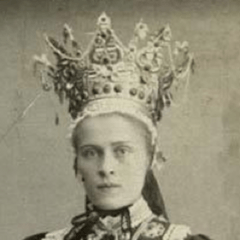Charles Sturt Quotes

Charles Sturt (1834). “Two expeditions into the interior of southern Australia during ... 1828, 1829, 1830 and 1831: with observations on New South Wales”, p.70
Charles Sturt (1834). “Two expeditions into the interior of Southern Australia: during the years 1828, 1829, 1830 and 1831 with observations on ... New South Wales”, p.128
Charles Sturt (1834). “Two expeditions into the interior of Southern Australia: during the years 1828, 1829, 1830 and 1831 with observations on ... New South Wales”, p.1
Charles Sturt (1834). “Two expeditions into the interior of Southern Australia: during the years 1828, 1829, 1830 and 1831 with observations on ... New South Wales”, p.20
Charles Sturt (1834). “Two expeditions into the interior of southern Australia during ... 1828, 1829, 1830 and 1831: with observations on New South Wales”, p.58
Charles Sturt (1834). “Two expeditions into the interior of Southern Australia: during the years 1828, 1829, 1830 and 1831 with observations on ... New South Wales”, p.34
Charles Sturt (1834). “Two expeditions into the interior of Southern Australia: during the years 1828, 1829, 1830 and 1831 with observations on ... New South Wales”, p.63
On the subject of emigration, it is not my intention to dwell at any length.
Charles Sturt (1834). “Two expeditions into the interior of southern Australia during ... 1828, 1829, 1830 and 1831: with observations on New South Wales”, p.58
Charles Sturt (1834). “Two expeditions into the interior of Southern Australia: during the years 1828, 1829, 1830 and 1831 with observations on ... New South Wales”, p.27
Charles Sturt (1834). “Two expeditions into the interior of Southern Australia: during the years 1828, 1829, 1830 and 1831 with observations on ... New South Wales”, p.48
Charles Sturt (1834). “Two expeditions into the interior of Southern Australia: during the years 1828, 1829, 1830 and 1831 with observations on ... New South Wales”, p.12
Charles Sturt (1834). “Two expeditions into the interior of Southern Australia: during the years 1828, 1829, 1830 and 1831 with observations on ... New South Wales”, p.68
Charles Sturt (1834). “Two expeditions into the interior of Southern Australia: during the years 1828, 1829, 1830 and 1831 with observations on ... New South Wales”, p.63






